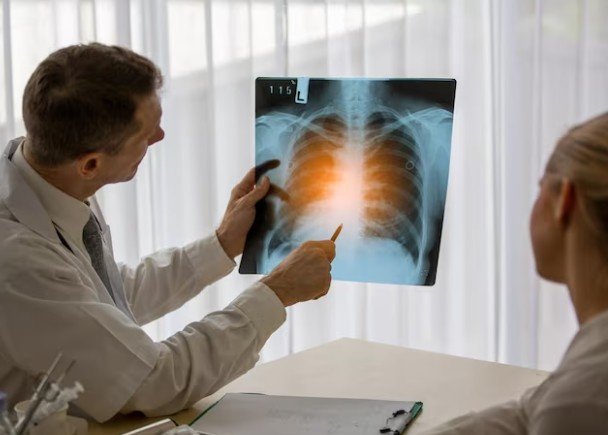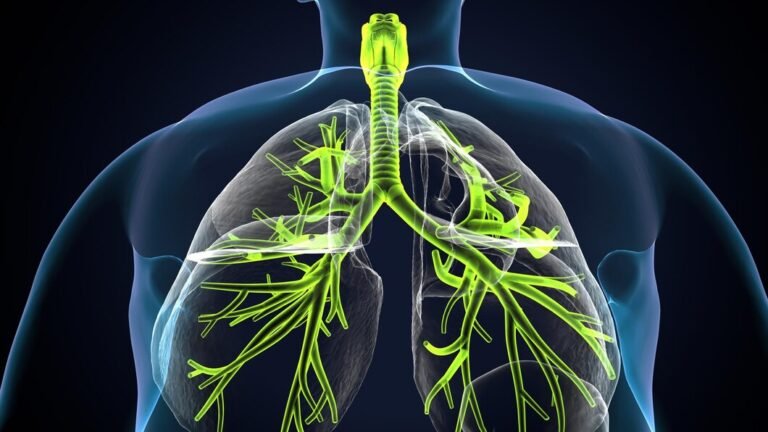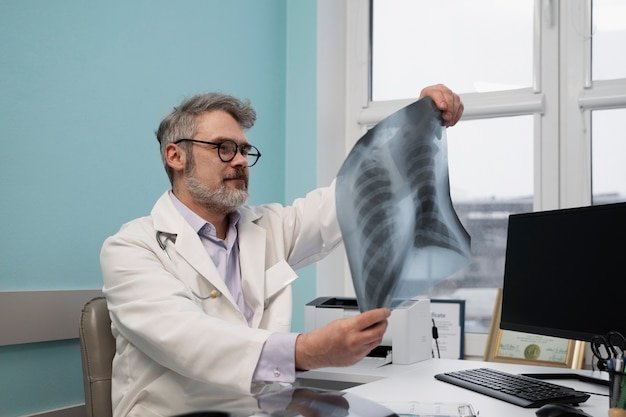Exploring Lung Biopsy: Unveiling its Vital Role in Diagnosis.
When it comes to diagnosing lung conditions, such as lung cancer, pulmonary fibrosis, or infections, medical professionals often rely on various diagnostic procedures. One such procedure that plays a crucial role in identifying the underlying causes of lung abnormalities is lung biopsy. In this article, we will delve into the intricacies of lung biopsy, uncovering its significance in diagnosing lung diseases and guiding treatment decisions.
To Know More About It Please Click Here
Understanding Lung Biopsy
A lung biopsy is a medical procedure used to obtain a small sample of lung tissue for examination under a microscope. The purpose of a lung biopsy is to determine the presence of abnormal cells, inflammation, infection, or other pathological changes within the lung tissue. By analyzing the biopsy sample, healthcare providers can make accurate diagnoses and develop appropriate treatment plans tailored to the patient’s specific condition.
Types of Lung Biopsy
There are several techniques for performing lung biopsy, each with its own advantages and considerations:
- Percutaneous Needle Biopsy: Percutaneous needle biopsy, also known as transthoracic needle biopsy, involves inserting a thin needle through the chest wall into the lung to collect tissue samples. This minimally invasive procedure is typically guided by imaging techniques such as computed tomography (CT) or ultrasound to ensure precise placement of the needle.
- Bronchoscopy: Bronchoscopy is a procedure in which a thin, flexible tube with a camera (bronchoscope) is inserted through the mouth or nose and into the airways of the lungs. During bronchoscopy, a biopsy forceps or brush is passed through the bronchoscope to collect tissue samples from the lung or airway walls.
- Surgical Biopsy: In some cases, a surgical biopsy may be necessary to obtain a larger tissue sample or to access hard-to-reach areas of the lung. Surgical biopsies can be performed using minimally invasive techniques, such as video-assisted thoracoscopic surgery (VATS), or through traditional open surgery.
Indications for Lung Biopsy: Lung biopsy may be recommended in the following situations:
- Suspicious lung nodules or masses are detected in imaging studies, such as chest X-rays or CT scans.
- Unexplained lung abnormalities, such as consolidation, scarring, or inflammation.
- Evaluation of suspected lung cancer or metastatic disease.
- Diagnosis of interstitial lung diseases, including idiopathic pulmonary fibrosis and sarcoidosis.
- Investigation of lung infections, such as tuberculosis or fungal pneumonia.
Role of Lung Biopsy in Diagnosis: Lung biopsy plays a crucial role in providing definitive diagnoses for various lung conditions. By analyzing the biopsy sample under a microscope, pathologists can identify specific cellular abnormalities, infectious organisms, or inflammatory patterns indicative of specific diseases. This information is invaluable for guiding treatment decisions and determining the prognosis for patients with lung disorders.
Risks and Complications: While lung biopsy is generally considered safe, it carries certain risks and potential complications, including:
- Bleeding at the biopsy site
- Pneumothorax (collapsed lung)
- Infection
- Damage to surrounding organs or structures
- Allergic reactions to anesthesia or medications
It is essential for patients to discuss the potential risks and benefits of lung biopsy with their healthcare provider before undergoing the procedure.
Conclusion
Lung biopsy is a valuable diagnostic tool that provides critical information for diagnosing and managing a wide range of lung conditions. Whether performed percutaneously, through bronchoscopy, or via surgical techniques, lung biopsy allows healthcare providers to obtain tissue samples for microscopic analysis, leading to accurate diagnoses and tailored treatment plans. By understanding the role of lung biopsy in diagnosis and its associated risks and benefits, patients and healthcare providers can work together to make informed decisions and achieve optimal outcomes in the management of lung diseases.
For any further queries, Plz visit https://delhichestspecialist.com/ or you can check our social media accounts, Facebook, Twitter Instagram








